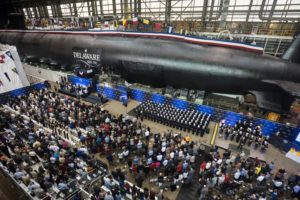
A Navy official this week called the next-generation nuclear-powered attack submarine, SSN(X), an apex predator that will combine the best capability and technologies from three earlier designs. “We are looking at the ultimate apex predator for the maritime domain. It is going to be faster, carry a significant punch, bigger payload, larger salvo rate, it’s going to have acoustic superiority and simultaneously we’re going to work on operational availability with respect to maintenance and life of the ship,” Rear Adm.…

 By
By 











